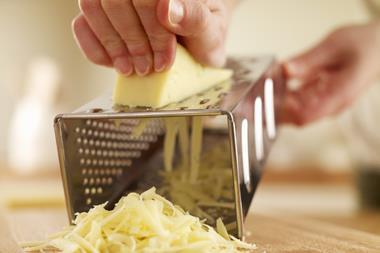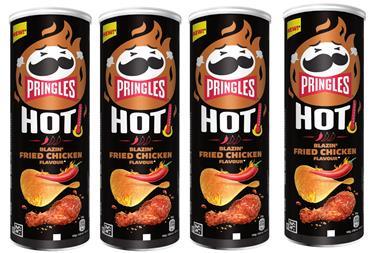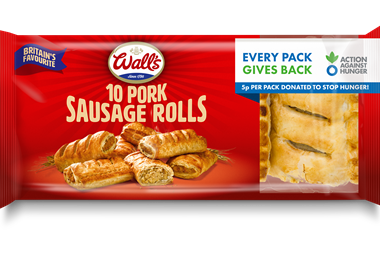In C-Store’s first health page, Jo de Mille looks at the latest health trends to pinpoint what customers are demanding in store.
Acustomer walks into your store and asks if you have any cereal bars with a low Glaecaemic Index which also contains only fruit sugars. As you are about to ask them what’s wrong with a packet of crisps, you suddenly realise this is not the first time customers have had ‘strange’ health requests.
Like it or not, retailers need to keep abreast of the latest health buzzwords, reports, fads and products if they want to stop customers going elsewhere, to somewhere which stocks these ‘strange’ products.
The Glycaemic Index (GI) will be the next big health craze, according to the independent international brand agency Dragon. GI was developed to help people, particularly diabetics and athletes, maintain stable blood sugar levels. It supports cutting down on refined and highly processed foods (high GI foods) and instead, opting for low GI foods – foods with complex carbohydrates which are more slowly digested, naturally low in sugar and high in fibre. It favours more natural foods over the current ‘healthy foods’ such as low fat products which are actually high in sugar.
GI ranks food on a scale from 0-100 according to how much it raises blood sugar levels after eating. Low GI foods (55 or less) include foods such as roasted and salted peanuts, apples, pears, porridge made with water, noodles, wholemeal bread and Special K. Moderate GI foods (56 to 69) include muesli, boiled potatoes, digestive biscuits, Mars bars, Ryvita and Weetabix. The high GI foods (70 or more) are foods such as white bread, bagels, boiled parsnips and white rice.
PRODUCT WATCH
RHM BREAD BAKERIES has revamped its entire Hovis range as the ‘healthiest ever Hovis’. The changes include new recipes, lower salt levels, new packaging and new advertising, supported by a £10m investment. White breads and rolls will be made using increased amounts of wholewheat, and the salt content across all products will be reduced by 10% on average.
KINGSMILL is also appealing to the health-conscious with its new Toastie wholemeal variant. Demand for wholemeal bread continues to grow: sales of wholemeal loaves are outstripping brown bread 4 to 1. The 800g Kingsmill Toastie wholemeal loaf replaces Kingsmill Toastie brown 800g.
KELLOGG’S has reduced the sugar content by 25% across all its Corn Flakes-based products – Corn Flakes, Frosties and Crunchy Nut Cornflakes. A 30g serving of Corn Flakes now contains 0.55g of salt, which contributes 9% of the Guideline Daily Amount (GDA). The same serving of Frosties and Crunchy Nut Cornflakes now contains 0.35g of salt (6% GDA). The GDA for salt is 6g per day. Frosted Wheats and Raisin Wheats contain no added salt. As part of its health and nutrition programme across all brands, UBUK has introduced three new variants to its McVitie’s Light range: light digestives 400g; light choc digestives 300g; light HobNobs 300g; and light rich tea 300g. All the packs have 25% less fat than standard variants. The company has also launched a healthier Hula Hoops variant – Hula Hoops shake 2 salt. Each pack comes with the salt in a sachet, which adds 40% less salt to the snack than the standard Hula Hoops pack. The new variant also contains no artificial colours, flavours or preservatives.
NESTLE ROWNTREE has given its Rowntree brands a healthy overhaul, with new recipes across its Fruit Pastilles, Fruit Gums, Jelly Tots and Tooty Fruities sweets. They now include real fruit juice and no artificial colours or flavours. The company is also launching a sugar-free lolly with a fizzy centre, which will be available from June 1.
One in four children are overweight, according to a Department of Health report. The figures, based on findings in 1995 and 2003, show obesity among children aged two to 10 years old rose from 10% to 14%. The biggest increase was among eight to 10s, up from 11% to 17% in the eight-year period. The study found that one in five of children who were living in households where both parents were either overweight or obese were also obese, compared to only 7% in homes where parents did not have a weight problem. The report reveals obesity is growing twice as fast among boys aged two to 10 than among girls in the same age band: up from 10% to 15% compared with a 2% rise for girls to 12%.
Acustomer walks into your store and asks if you have any cereal bars with a low Glaecaemic Index which also contains only fruit sugars. As you are about to ask them what’s wrong with a packet of crisps, you suddenly realise this is not the first time customers have had ‘strange’ health requests.
Like it or not, retailers need to keep abreast of the latest health buzzwords, reports, fads and products if they want to stop customers going elsewhere, to somewhere which stocks these ‘strange’ products.
The Glycaemic Index (GI) will be the next big health craze, according to the independent international brand agency Dragon. GI was developed to help people, particularly diabetics and athletes, maintain stable blood sugar levels. It supports cutting down on refined and highly processed foods (high GI foods) and instead, opting for low GI foods – foods with complex carbohydrates which are more slowly digested, naturally low in sugar and high in fibre. It favours more natural foods over the current ‘healthy foods’ such as low fat products which are actually high in sugar.
GI ranks food on a scale from 0-100 according to how much it raises blood sugar levels after eating. Low GI foods (55 or less) include foods such as roasted and salted peanuts, apples, pears, porridge made with water, noodles, wholemeal bread and Special K. Moderate GI foods (56 to 69) include muesli, boiled potatoes, digestive biscuits, Mars bars, Ryvita and Weetabix. The high GI foods (70 or more) are foods such as white bread, bagels, boiled parsnips and white rice.
PRODUCT WATCH
RHM BREAD BAKERIES has revamped its entire Hovis range as the ‘healthiest ever Hovis’. The changes include new recipes, lower salt levels, new packaging and new advertising, supported by a £10m investment. White breads and rolls will be made using increased amounts of wholewheat, and the salt content across all products will be reduced by 10% on average.
KINGSMILL is also appealing to the health-conscious with its new Toastie wholemeal variant. Demand for wholemeal bread continues to grow: sales of wholemeal loaves are outstripping brown bread 4 to 1. The 800g Kingsmill Toastie wholemeal loaf replaces Kingsmill Toastie brown 800g.
KELLOGG’S has reduced the sugar content by 25% across all its Corn Flakes-based products – Corn Flakes, Frosties and Crunchy Nut Cornflakes. A 30g serving of Corn Flakes now contains 0.55g of salt, which contributes 9% of the Guideline Daily Amount (GDA). The same serving of Frosties and Crunchy Nut Cornflakes now contains 0.35g of salt (6% GDA). The GDA for salt is 6g per day. Frosted Wheats and Raisin Wheats contain no added salt. As part of its health and nutrition programme across all brands, UBUK has introduced three new variants to its McVitie’s Light range: light digestives 400g; light choc digestives 300g; light HobNobs 300g; and light rich tea 300g. All the packs have 25% less fat than standard variants. The company has also launched a healthier Hula Hoops variant – Hula Hoops shake 2 salt. Each pack comes with the salt in a sachet, which adds 40% less salt to the snack than the standard Hula Hoops pack. The new variant also contains no artificial colours, flavours or preservatives.
NESTLE ROWNTREE has given its Rowntree brands a healthy overhaul, with new recipes across its Fruit Pastilles, Fruit Gums, Jelly Tots and Tooty Fruities sweets. They now include real fruit juice and no artificial colours or flavours. The company is also launching a sugar-free lolly with a fizzy centre, which will be available from June 1.
One in four children are overweight, according to a Department of Health report. The figures, based on findings in 1995 and 2003, show obesity among children aged two to 10 years old rose from 10% to 14%. The biggest increase was among eight to 10s, up from 11% to 17% in the eight-year period. The study found that one in five of children who were living in households where both parents were either overweight or obese were also obese, compared to only 7% in homes where parents did not have a weight problem. The report reveals obesity is growing twice as fast among boys aged two to 10 than among girls in the same age band: up from 10% to 15% compared with a 2% rise for girls to 12%.

























No comments yet